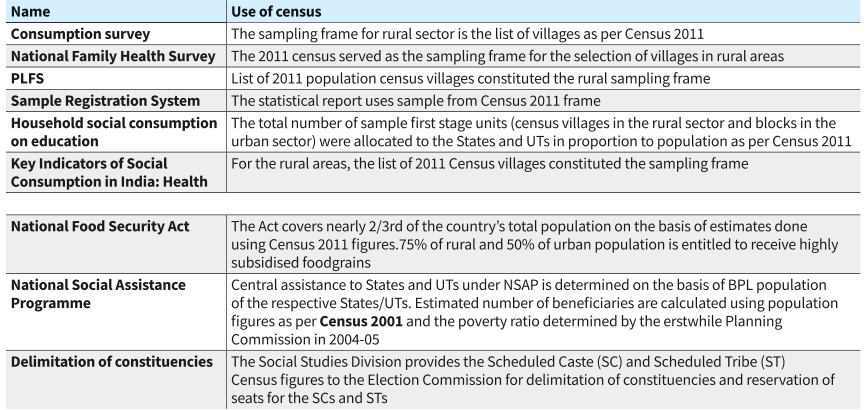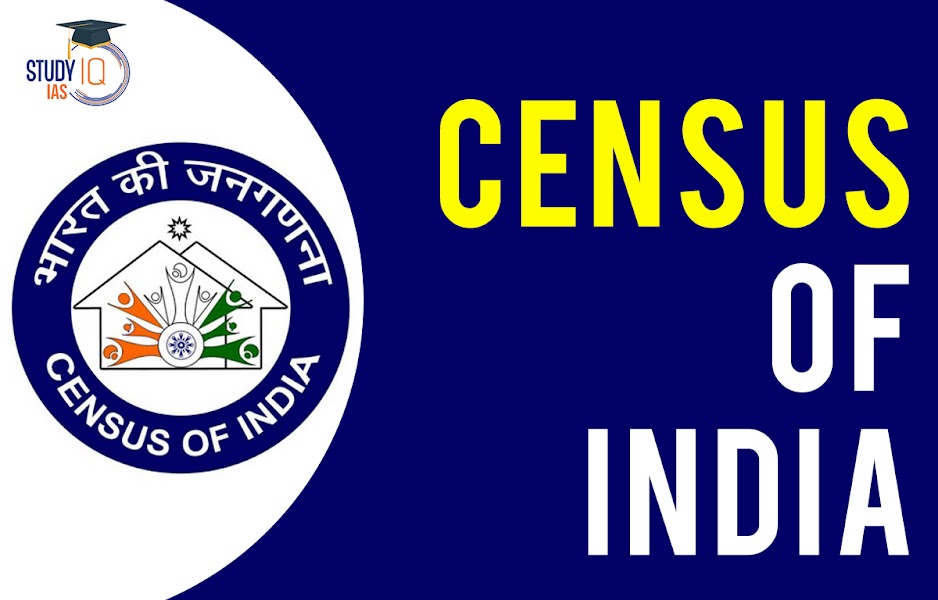Table of Contents
The Central government of India is gearing up to initiate the long-awaited census in 2025, aiming to complete this significant exercise by 2026. This census, delayed by four years since the last one, will pave the way for a comprehensive understanding of India’s demographic landscape. Following the census, the government plans to undertake a delimitation exercise for Lok Sabha seats, projected to be finished by 2028. This article delves into the implications of the upcoming census, the calls for a caste-based enumeration, and the importance of inclusive representation.
The 2025 Census in India
The Central government of India is set to conduct the long-awaited census in 2025, aiming for completion by 2026. This census comes after a four-year delay and is crucial for understanding India’s demographic landscape. It is expected to include detailed surveys of sub-sects within General and Scheduled Caste/Scheduled Tribe categories, enhancing representation for various communities. Following the census, a delimitation exercise for Lok Sabha seats will take place, projected to finish by 2028. The need for a caste-based census has been emphasized by opposition leaders, highlighting the importance of ensuring adequate representation for marginalized groups in governance.
What is the Census?
- A Population Census is a comprehensive process of collecting, compiling, analysing, and disseminating demographic, economic, and social data of all persons in a country at a specific time.
- It serves as a tool to review a country’s progress over the past decade, monitor ongoing government schemes, and plan for the future.
- The census provides a snapshot of a community at a particular moment in time.
Census Operations in India
Census Operations are conducted in two phases in India:
- Houselisting/Housing Census: Records details of all buildings and their amenities.
- Population Enumeration: Collects detailed information on each individual residing in the country.
- The Population Enumeration follows the creation of a list of all households to be surveyed.
Administrative Responsibility
The Office of the Registrar General and Census Commissioner, under the Ministry of Home Affairs, conducts the decennial census. Prior to 1951, the Census Organisation was established on an ad-hoc basis for each census.
Legal Framework
The Census of India Act of 1948 provides the legal basis for conducting the census. However, the Act does not specify the timing or frequency of the census. The 2011 census was the most recent, with the subsequent one scheduled for 2021 postponed due to the COVID-19 pandemic.
Census of India 2011
This was the fifteenth census of Indians. The home listing and population enumeration were two components of this. Uttar Pradesh was discovered to be India’s most populous state, per the 2011 census. A total of 199,812,341 people called it home, making up 16.51% of all Indians. With a population of 610,577, Sikkim was discovered to be the least populated state in India according to this census, accounting for 0.05% of all Indians.
Latest Data of Census of India 2011
This table has all the important facts related to the Census of India 2011. Candidates can read all the details related census of India 2011 in the table below:
| Category | State |
| State with the least amount of people | Bihar |
| State with the greatest density of people | Arunachal Pradesh |
| Area of the Union with the smallest population | Lakshadweep |
| Nation’s most populous state | Uttar Pradesh |
| Nation’s least populous state | Sikkim |
| The most sexually balanced state | Kerala |
| The lowest female ratio state | Haryana |
| The nation’s most literate state | Kerala |
| The nation’s least literate state | Bihar |
| Literacy Rate in India | Data from Census of India 2011 |
| Male | 82.14% |
| Female | 65.46% |
| Overall Literacy | 74% |
Highlights of Census of India 2011
- The Census of India 2011 was conducted in two stages: House listing & Housing Census from April to September 2010, and Population Enumeration from 9th to 28 February 2011.
- It marked the 15th Census of India and the 7th Census of Independent India, commencing on 1st April 2010, with the President of India being the first citizen enumerated, followed by the Vice President.
- The slogan for the census was ‘Our Census, Our Future’.
- C. Chandramouli served as the Census Commissioner of India for the year 2011.
- The provisional figures revealed a population of 1,210.19 million, with 623.7 million males (51.54%) and 586.46 million females (48.46%).
- Uttar Pradesh emerged as the most populous state in India, with a population exceeding that of Brazil.
Importance of Census Data for Welfare Schemes
- A 2011 publication from The Office of Registrar General and Census Commissioner highlights the necessity of the census for welfare state functions, providing primary data at grassroots levels.
- Several surveys and schemes depend on updated census data for accurate sampling and beneficiary identification.
Impact Due to Lack of Updated Census
- Consumption Survey 2022-23: Uses 2011 census data to understand expenditure patterns and standard of living.
- National Family Health Survey 2019-21: Relied on 2011 census data to identify districts needing improved health services.
- National Family Security Act: Based on 2011 figures, economists estimate that at least 100 million people are excluded from receiving subsidised food grains.
- Eklavya Model Residential School (EMRS): Uses 2011 data to determine areas for new schools, potentially missing blocks that now meet the criteria and including those that no longer do.

Historical Context of Census of India
- The first synchronous census in India was conducted in 1881 by W.C. Plowden.
- Since then, censuses have been conducted every ten years without interruption.
- The Census of India Act of 1948 provides the legal framework but doesn’t specify timing or periodicity.
- While constitutionally mandated, there’s no legal requirement for a decennial census in India.
- Other countries vary in frequency: the US and UK conduct censuses every 10 years, while Australia, Canada, and Japan do so every 5 years.
The decennial census of India, initiated by Viceroy Lord Mayo in 1872, has been a regular occurrence every 10 years, with the first comprehensive census conducted in 1881. Since 1949, it has been overseen by the Registrar General and Census Commissioner of India, operating under the Ministry of Home Affairs, Government of India.
| Fact |
BRICS and Neighboring Countries
|
Population Projection for India
- According to the “Report of the Technical Group on Population Projections” published by the National Commission on Population, Ministry of Health and Family Welfare, the population projections for India (2011-2036) are:
- The population of India is expected to increase from 121.1 crores (1.211 billion) to 151.8 crores (1.518 billion) during this period.
- This indicates an overall increase of 25% over 25 years, with an average annual growth rate of 1.0%.
- Consequently, the population density is projected to rise from 368 persons per square kilometre to 462 persons per square kilometre.
- It is important to note that these projections are based on Census 2011 data.
Census of India History
| Year | Details |
| First Census of India (1881) | It placed a strong focus on categorizing the demographic, economic, and social traits of British India’s entire continent (Except Kashmir and French and Portuguese colonies). |
| Second Census of India (1891) | It followed a methodology that was remarkably similar to that of the 1881 census. To provide complete coverage, Sikkim, Kashmir, and the upper portion of modern-day Burma were also included. |
| Third Census of India (1901) | Balochistan, Rajputana, Andaman Nicobar, Burma, Punjab, and distant regions of Kashmir were also counted in this census. |
| Fifth Census of India (1921) | The only decade up until now to experience a decadal population drop of 0.31% was the decade from 1911 to 21. The influenza pandemic of 1918, which claimed at least 12 million lives, concluded during this decade. Up until the 1921 Census, India’s population continued to grow, and it has continued to do so since. In India’s population history, the census year of 1921 is therefore referred to as “The Great Divide” year. |
| Eleventh Census of India (1971) | Following freedom, it was the second Census. A question about fertility for women who are already married was introduced. |
| Thirteenth Census of India (1991) | The sixth census since India gained its independence. In contrast to 1981, when children up to the age group of 4+ were treated as literate, the definition of literacy in this Census changed, and children of the age group of 7+ were deemed literate. |
| Fourteenth Census in India (2001) | It saw a significant advance in technology. The phase plans were scanned using high-speed scanners, and using Intelligent Character Reading, the handwritten data from the schedules was transformed into digital form. |
| Fifteenth Census of India (2011) | EAG States (Empowered action group states: UP, Uttarakhand, Bihar, Jharkhand, MP, Chhattisgarh, Rajasthan & Orissa) experienced a substantial decline in population for the first time in the 2011 Census. An ICR reads image data and extracts handwriting. The printed characters are captured using a sophisticated form of optical character recognition (OCR) technology. |
| Sixteenth Census of India (2021) | Because of the Covid-19 pandemic epidemic, the census of 2021 has been delayed. The first computerized Census, however, will also include a self-enumeration option. The information on homes led by members of the transgender community and the people who reside there will be gathered for the first time. There used to be a section reserved for men and women only. |
Background of Census in India
- According to “Rig Veda,” a population count was kept about 800-600 BC.
- In his Arthasastra, Kautilya (c. 321-296 BC) emphasised the importance of census taking as a gauge of state policy for taxation purposes.
- The administrative report ‘Ain-e-Akbari’ from the reign of Mughal monarch Akbar had extensive information about the population, industry, wealth, and many other aspects.
- India’s first census was carried out in 1872, during the administration of Lord Mayo, the Governor-General. In 1881, the first comprehensive synchronised Census was carried out.
- Henry Walter is widely regarded as the “Father of the Indian Census.”
Constitutional and Legal Provision for Census
- Constitutional Provision: A Census is Constitutionally mandated in India, but it does not say when the Census has to be carried out, or what the frequency of this exercise should be. Thus, there is no Constitutional or legal requirement that a Census has to be done every 10 years.
- The population census is a Union subject under Article 246 of the Indian Constitution.
- It is listed as serial number 69 of the seventh schedule of the constitution.
- Legal Provision for Census: The Census of India Act of 1948, which provides the legal framework for carrying out the Census, also does not mention its timing or periodicity.
- The Act makes it obligatory on the part of every citizen to answer the Census question truthfully and also penalises for giving false information.
- Office: The decennial Census is conducted by the Office of the Registrar General and Census Commissioner, Ministry of Home Affairs.
- It was formed to arrange, conduct and analyse the results of the demographic surveys of India including Census of India and Linguistic Survey of India.
- Census Rules, created in 1990, were amended by the Union government in 2022 to enable self-enumeration by respondents as well as the capture and storage of information in electronic form.
Consequences of Delayed Census
- Trust Factor: The reliability of outdated census data, which is still available from the 2011 Census, has an impact on both people who do and do not benefit from assistance programmes.
- It may be necessary for researchers and decision-makers to rely on old data or other data sources, which might not offer the same level of precision or granularity.
- Census data are essential since other sample surveys carried out throughout the nation refer to them. For instance, data from the 2011 census were utilised in the most recent National Family Health Survey (NFHS-5), which was published last year.
- Policy Planning: Accurate census data is necessary for spotting trends as they emerge, evaluating needs, and exploiting opportunities.
- Missed opportunities for targeted interventions, economic planning, and commercial decisions can be brought on by a census delay.
- Funds Allocation: When allocating funds to the states, the Finance Commission takes census statistics into consideration.
- Funding distribution to the states would be disproportionate without precise data.
- Migration data: Census information is essential for understanding migration, migration patterns, and the economic effects of migration.
- Because of the Census’s delay, policymakers and planners do not have access to the most recent data on domestic and international migration.
- Delimitation/reservation of Constituencies: Panchayats that have seen rapid changes in the composition of their population over the last decade, would mean that either too many or too few seats are being reserved.
- Delimitation of parliamentary and Assembly constituencies would continue to be based on the 2001 Census till data from a Census after 2026 are published.
- Rural-urban distribution of population: There is high population growth in urban areas. Some cities have been growing faster than others through in-migration.
- For example, areas under the Bruhat Bengaluru Mahanagara Palike grew by 49.3% during 2001-11, while the Municipal Corporation of Greater Mumbai (11.9%), the Delhi Municipal Corporation (11.7%), and Greater Chennai Corporation (7.0%) had much lower growth rates.


 List of Awards and Honours Received by N...
List of Awards and Honours Received by N...
 List of GI Tag Products in India 2025, S...
List of GI Tag Products in India 2025, S...
 Hurun Global Unicorn Index 2025: Key Hig...
Hurun Global Unicorn Index 2025: Key Hig...





















